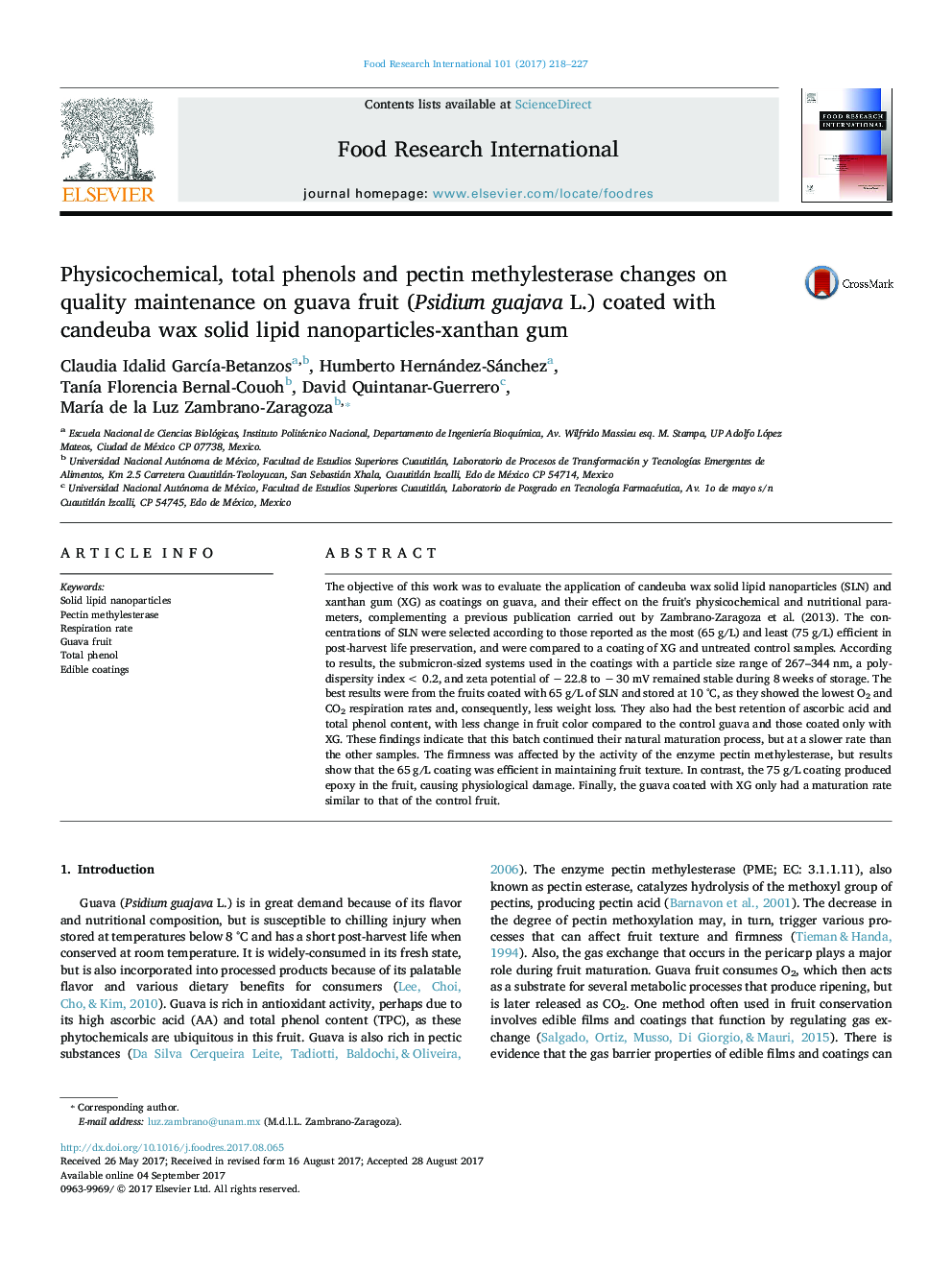| Article ID | Journal | Published Year | Pages | File Type |
|---|---|---|---|---|
| 5767811 | Food Research International | 2017 | 10 Pages |
â¢Prepared candeuba wax solid lipid nanoparticles remained stable for 8 weeks.â¢Coatings with 65 g/L of SLN delayed biochemical and physiological changes.â¢Concentrations > 65 g/L of SLN produced physiological damage in guava.â¢Retention of total polyphenols was higher for guava coated with SLN.â¢SLN coatings contributed to maintaining texture and low pectin methylesterase.
The objective of this work was to evaluate the application of candeuba wax solid lipid nanoparticles (SLN) and xanthan gum (XG) as coatings on guava, and their effect on the fruit's physicochemical and nutritional parameters, complementing a previous publication carried out by Zambrano-Zaragoza et al. (2013). The concentrations of SLN were selected according to those reported as the most (65 g/L) and least (75 g/L) efficient in post-harvest life preservation, and were compared to a coating of XG and untreated control samples. According to results, the submicron-sized systems used in the coatings with a particle size range of 267-344 nm, a polydispersity index < 0.2, and zeta potential of â 22.8 to â 30 mV remained stable during 8 weeks of storage. The best results were from the fruits coated with 65 g/L of SLN and stored at 10 °C, as they showed the lowest O2 and CO2 respiration rates and, consequently, less weight loss. They also had the best retention of ascorbic acid and total phenol content, with less change in fruit color compared to the control guava and those coated only with XG. These findings indicate that this batch continued their natural maturation process, but at a slower rate than the other samples. The firmness was affected by the activity of the enzyme pectin methylesterase, but results show that the 65 g/L coating was efficient in maintaining fruit texture. In contrast, the 75 g/L coating produced epoxy in the fruit, causing physiological damage. Finally, the guava coated with XG only had a maturation rate similar to that of the control fruit.
Graphical abstractDownload high-res image (214KB)Download full-size image
